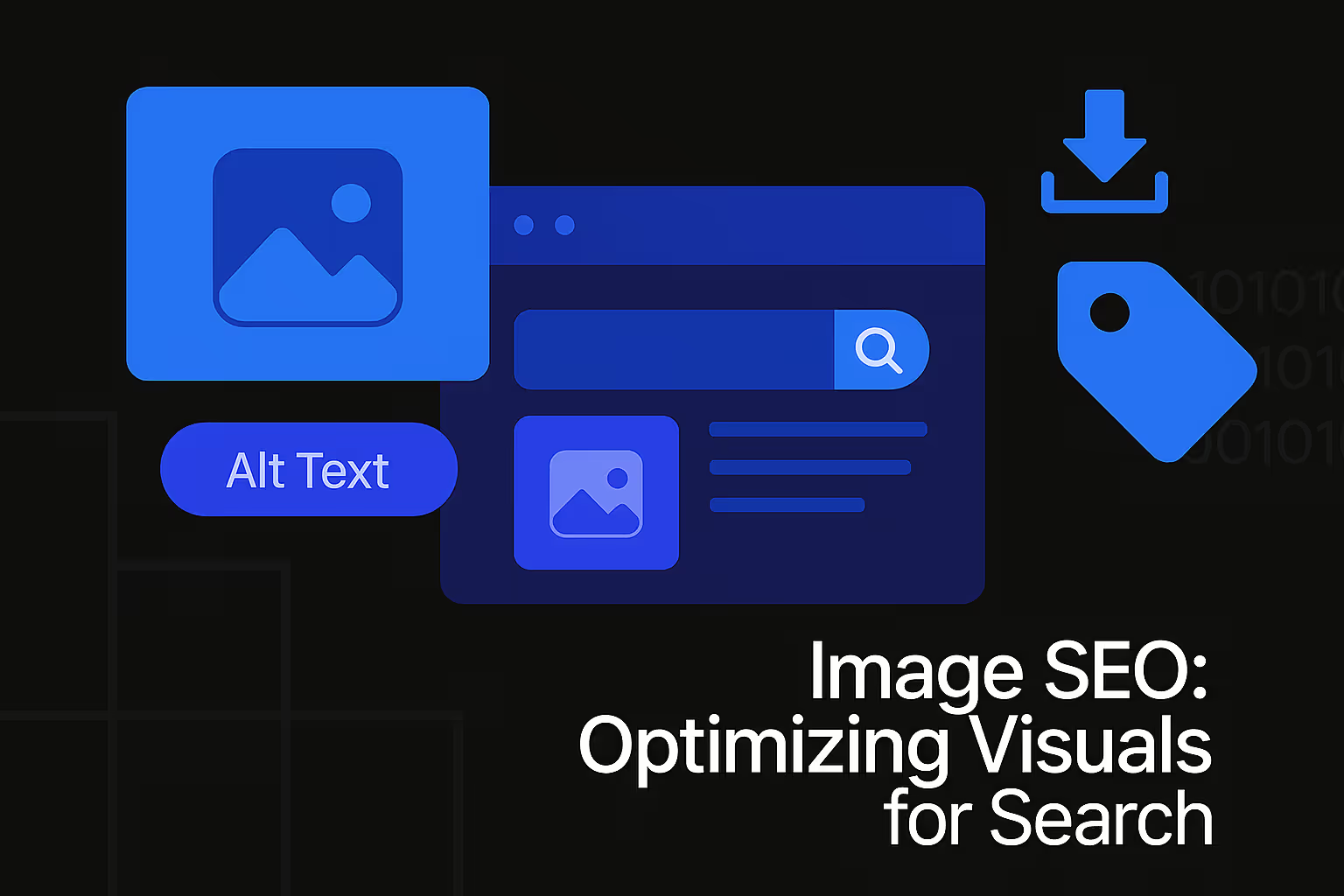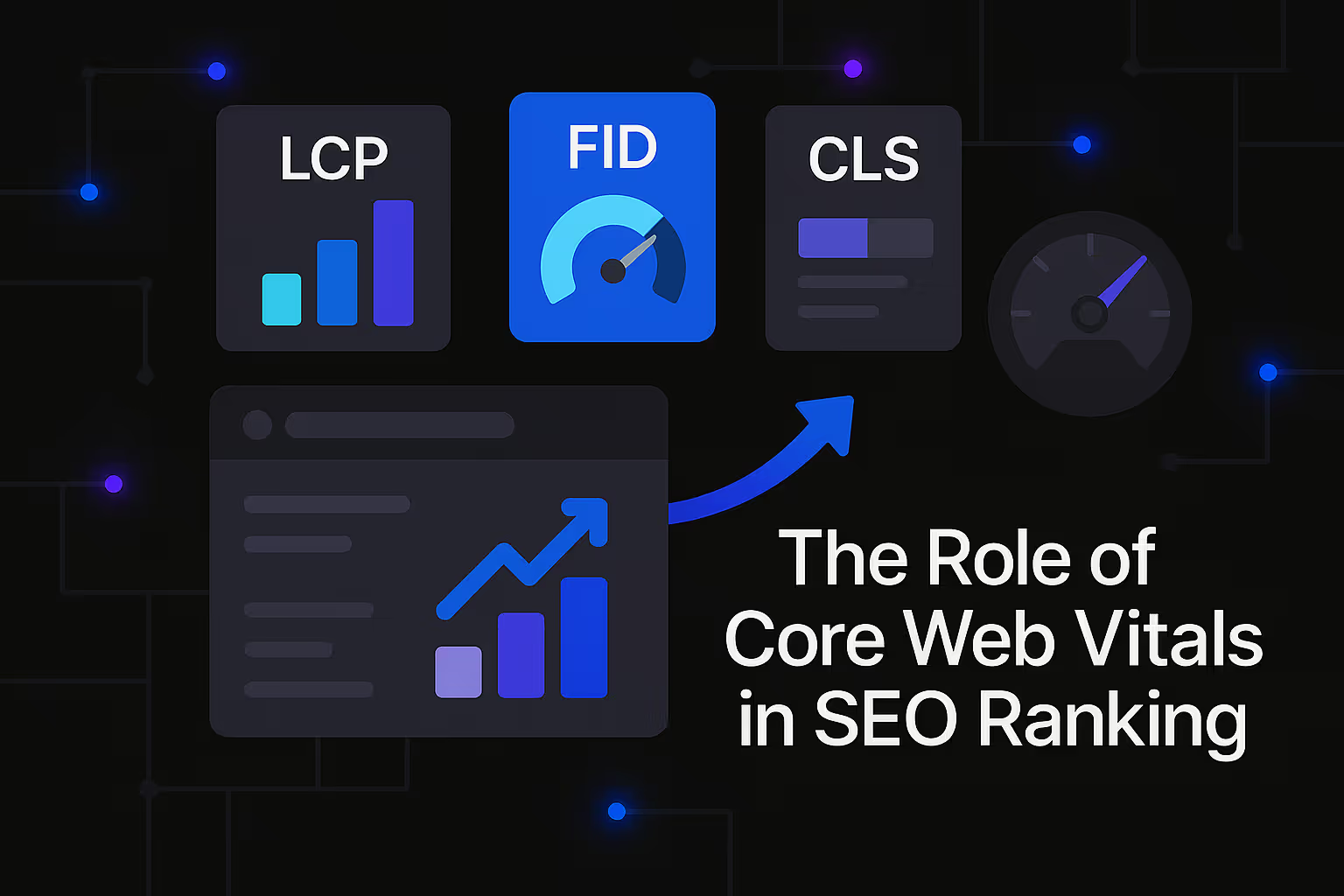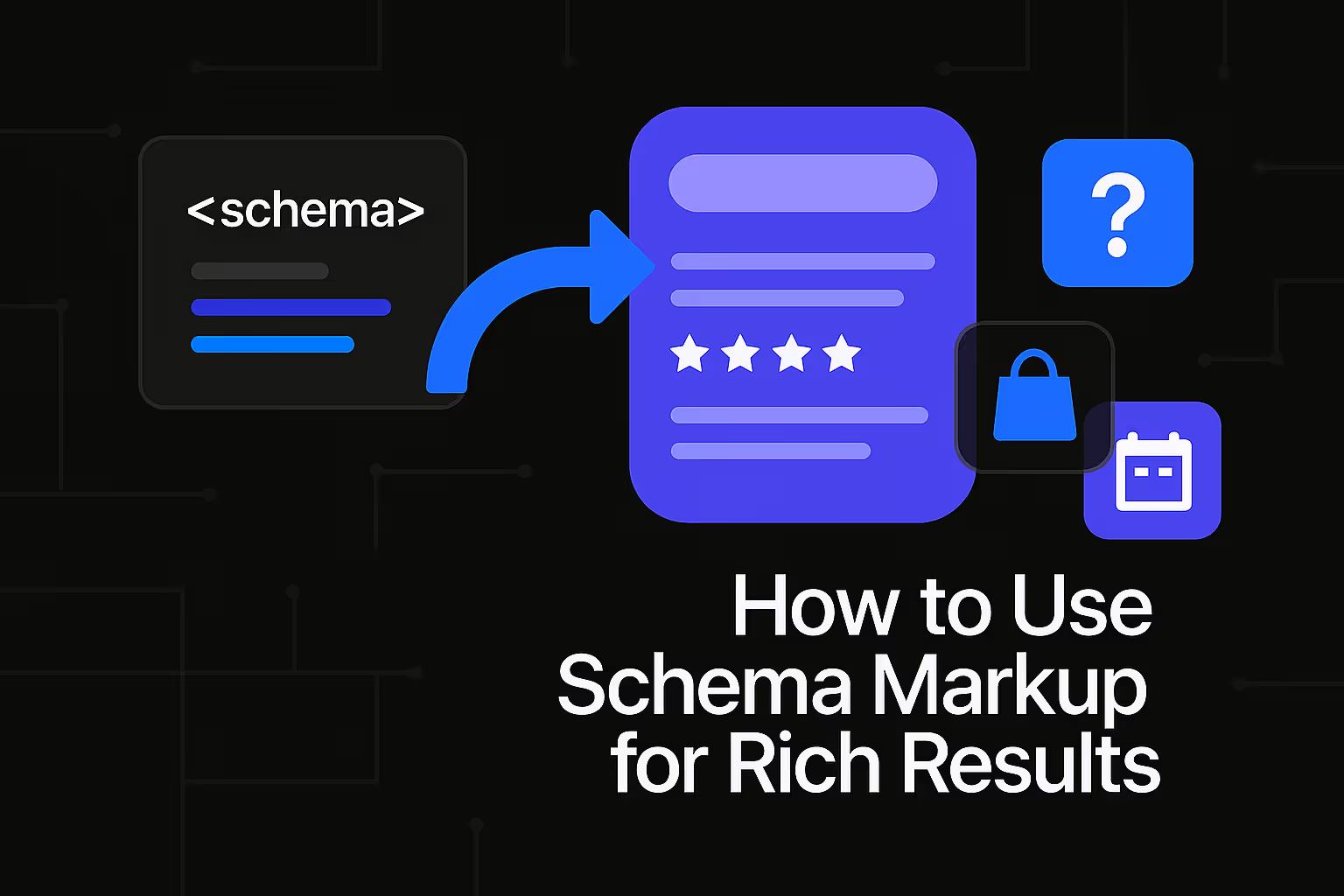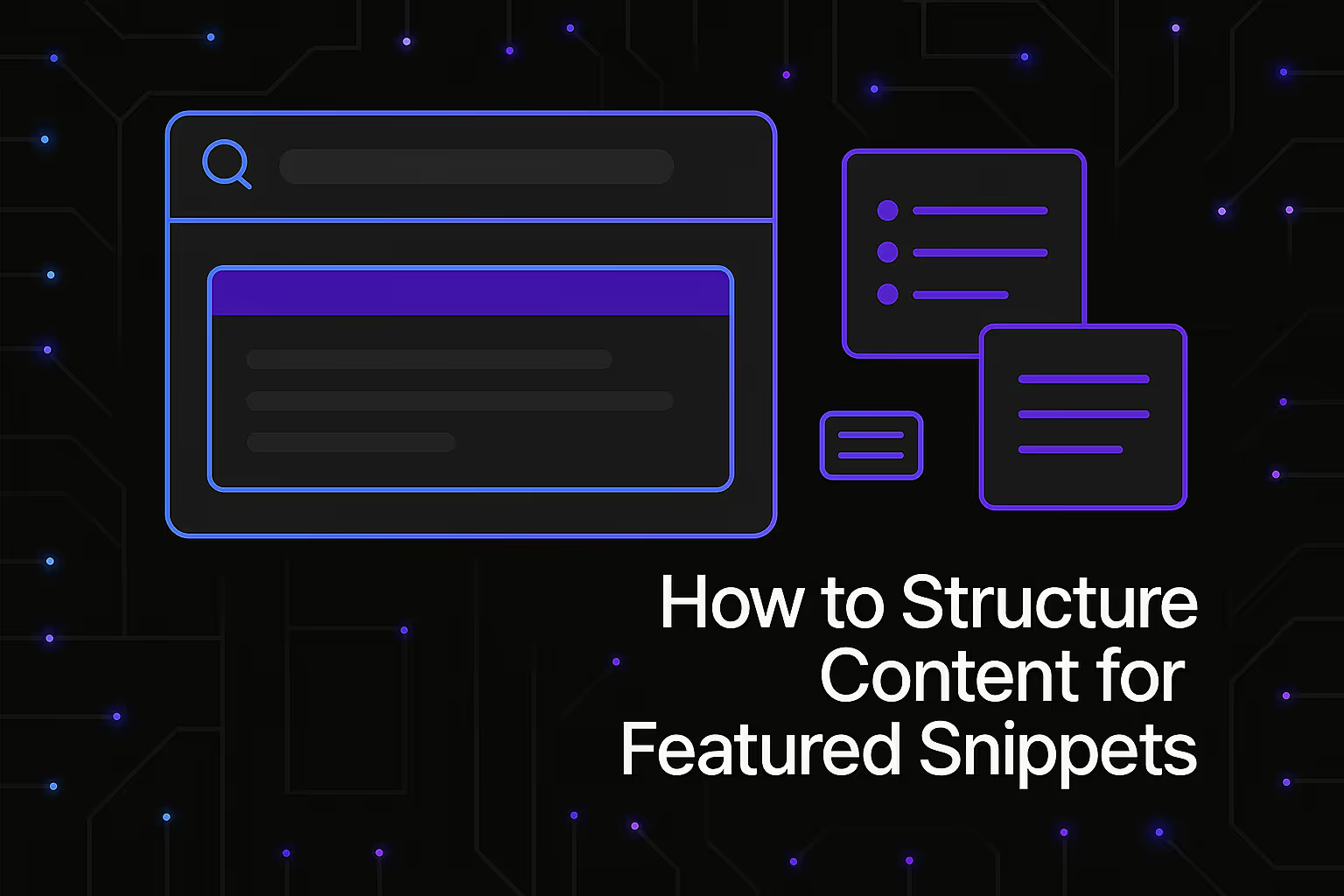Image SEO: Optimizing Visuals for Search

In the vast, ever-expanding digital landscape, where content reigns supreme, the importance of visual elements cannot be overstated. Images are no longer mere embellishments; they are integral components of compelling narratives, powerful communication tools, and, critically, significant contributors to search engine optimization. For the discerning SEO specialist, understanding the nuances of image SEO is not just a strategic advantage—it is an absolute necessity. Optimizing your visuals for search engines transcends mere aesthetics; it's about enhancing discoverability, improving user experience, and ultimately, driving organic traffic and conversions. This deep dive will explore the multifaceted world of image SEO, revealing how strategically optimized visuals can dramatically improve your website's performance in search results.
The Undeniable Power of Visuals in the Digital Landscape
Images capture attention, convey complex information efficiently, and break up dense text, making content more digestible and engaging for the reader. In a world saturated with information, visuals provide an immediate connection, often communicating more effectively than words alone. From product showcases on an e-commerce site to illustrative graphs in a technical blog post, images serve a fundamental purpose in informing and engaging users. However, their contribution extends far beyond the human eye. Search engines, specifically their sophisticated crawlers like Googlebot, are increasingly adept at interpreting and understanding visual content, integrating it into their ranking algorithms.
Beyond Aesthetics: Why Images are SEO Powerhouses
At its core, search engine optimization is about making your content accessible and understandable to search engines, ensuring it aligns with user intent, and ultimately providing the best possible answer to a query. Images play a pivotal role in this ecosystem. Properly optimized images contribute to faster page load times, which is a crucial ranking factor and a significant determinant of user experience. They also offer additional avenues for discoverability through image search results, drawing in users who might not have found your content through traditional text-based queries. Moreover, images provide valuable context to textual content, helping search engines more accurately grasp the overall topic and relevance of a page. A visually rich page, when optimized correctly, signals to search engines that the content is comprehensive, authoritative, and designed with the user in mind, aligning perfectly with a "people-first" philosophy. The semantic understanding that search engines now possess allows them to connect visual information with textual content, forming a holistic view of your page's relevance and value.
The Fundamental Pillars of Image Optimization
Achieving top-tier image SEO involves a meticulous approach to several key elements. Each component, from the file name to the surrounding text, contributes to how search engines perceive and rank your visuals. By mastering these foundational pillars, you lay the groundwork for superior image performance in search.
Crafting Compelling Alt Text: More Than Just a Description
Perhaps the most critical aspect of image SEO is the alternative text, commonly known as alt text or alt tags. This concise, descriptive text embedded within the HTML of an image serves multiple vital functions. Primarily, it provides a textual description of the image for screen readers used by visually impaired users, making your content accessible to a broader audience. From an SEO perspective, alt text acts as a powerful communication bridge between your image and search engines. Since search engine crawlers cannot "see" an image in the same way a human can, they rely on alt text to understand the image's content and context.
When writing alt text, think of it as a brief, informative caption that accurately describes the image's subject and purpose. Include relevant keywords naturally, but avoid keyword stuffing. The goal is clarity and context, not just keyword density. For instance, instead of alt="dog", if the image shows a golden retriever playing fetch in a park, a more effective alt text would be alt="Golden retriever playing fetch with a red ball in a sunny park". If the image is a product shot, include the product name and key identifiers, such as alt="Acme Super Widget 2000, front view". This descriptive approach aids search engines in indexing your images correctly, enhancing their chances of appearing in relevant image search results and reinforcing the topic of your surrounding content. Remember, the semantic understanding that search engines employ means they are looking for genuine relevance and context, not just keyword matches.
Strategic Image Filenames: A Subtle SEO Advantage
While often overlooked, the filename of your image is another valuable signal for search engines. Before uploading an image, take a moment to rename it descriptively, incorporating relevant keywords. Just as with alt text, clarity and context are paramount. Avoid generic filenames like IMG_001.jpg or image.png. Instead, use hyphens to separate words in your filename for readability and to signal individual terms to search engines. For example, golden-retriever-playing-fetch.jpg is far more effective than image001.jpg.
This seemingly small detail contributes to the overall clarity and relevance of your page in the eyes of search engines. A descriptive filename, combined with robust alt text, paints a clearer picture for crawlers about the content of your image, improving its chances of being indexed for appropriate queries. It's a foundational technical SEO practice that ensures your images are as discoverable as your textual content.
The Critical Role of Image Size and Format: Balancing Quality and Performance
One of the most significant factors in image SEO, particularly concerning user experience and page speed, is image size and format. Large, unoptimized images can drastically slow down your website, leading to higher bounce rates and negatively impacting your search rankings. Google, in particular, places a strong emphasis on page speed as a core web vital. Users expect fast-loading websites, and search engines reward those that deliver.
Choosing the right image format is the first step.
- JPEG (or JPG) is ideal for photographs and images with many colors and gradients, offering good compression with minimal loss of quality.
- PNG is better suited for images with transparent backgrounds, sharp lines, or fewer colors, such as logos, icons, or illustrations. While PNGs can be larger than JPEGs, their ability to handle transparency often makes them indispensable.
- WebP is a modern image format developed by Google that offers superior compression for both lossy and lossless images compared to JPEG and PNG, often resulting in significantly smaller file sizes without noticeable quality degradation. Where possible, adopting WebP can provide a substantial performance boost.
Beyond format, compression is key. Before uploading, always compress your images to reduce their file size without sacrificing too much visual quality. There are numerous online tools and software applications available for image compression. Striking the right balance between image quality and file size is crucial. The goal is to deliver a visually appealing image that loads quickly. High-quality images enhance the user experience, but excessive file sizes can render that experience frustrating. Furthermore, specify image dimensions in your HTML or CSS. This allows browsers to allocate the correct space for the image before it fully loads, preventing layout shifts and contributing to a smoother user experience, which is another aspect of core web vitals.
Ensuring Discoverability: Image Sitemaps and Accessibility
Just as you have an XML sitemap for your website's pages, an image sitemap can be incredibly beneficial for image SEO. An image sitemap specifically lists the images on your site, providing search engines with explicit information about your visual content. This helps crawlers discover images that might otherwise be missed, particularly those loaded with JavaScript. By including details like the image's location, title, and caption, you give search engines a clear roadmap to your visual assets, improving their chances of being indexed and appearing in image search results. This proactive approach to crawl budget optimization ensures that valuable crawl resources are directed to your important visual content.
Accessibility extends beyond just alt text. Ensuring your images are readily accessible to Googlebot means avoiding practices that might hide them, such as embedding them solely within complex JavaScript that crawlers struggle to render. The foundational principle of technical SEO dictates that all essential resources, including images, must be easily discoverable and accessible for proper indexing. This also means considering users with varying internet speeds or data limitations. Serving optimized, appropriately sized images aligns with providing a user-first experience, a core principle of modern SEO.
Enhancing User Experience: Lazy Loading and Responsive Images
Two advanced techniques significantly impact both user experience and page speed: lazy loading and responsive images.
Lazy loading defers the loading of images until they are actually needed, typically when the user scrolls them into view. Instead of loading every image on a page at once, which can be particularly burdensome for content-rich pages, lazy loading prioritizes the visible content. This dramatically improves the initial page load time, making the website feel much faster and more responsive. Google itself supports native lazy loading through the loading="lazy" attribute, making implementation straightforward for many modern browsers. This optimization is crucial for reducing bandwidth consumption and improving overall site performance, which directly impacts SEO rankings.
Responsive images ensure that users receive the most appropriate image size for their device and screen resolution. Instead of serving a single, large image to all users, responsive image techniques use HTML attributes like srcset and sizes to specify different image versions based on display characteristics. This means a user on a mobile phone with a smaller screen and potentially slower internet connection won't download an unnecessarily large image designed for a desktop monitor. By serving images tailored to the user's context, you enhance performance, conserve bandwidth, and provide a superior visual experience across all devices. This aligns with the mobile-first indexing approach of search engines, where the mobile version of your site is primarily used for indexing and ranking.
Contextual Relevance and Advanced Image SEO Tactics
Beyond the fundamental technical optimizations, the way images are integrated into your content and their semantic relationship with surrounding text plays a crucial role in their SEO performance. Furthermore, embracing originality and leveraging advanced distribution methods can elevate your image strategy.
The Power of Proximity: Captions and Surrounding Text
While alt text provides a machine-readable description, image captions offer a human-readable one. Captions provide immediate context to the image for users and can reinforce keywords and themes for search engines. They allow you to add more detail than alt text, further explaining the image's relevance to the content. Search engines analyze the text surrounding an image, including captions, headings, and paragraphs, to understand its topic and relevance.
Therefore, ensure that your images are placed within relevant textual content. An image of a specific product should be near the product description, and a graph illustrating data should be adjacent to the discussion of that data. This contextual proximity helps search engines semantically connect the visual information with the textual information, enhancing the overall understanding of your page's content and improving its authority and trustworthiness. This holistic approach to content generation, where text and visuals work in harmony, is precisely what search engines seek for high-quality content.
Unleashing Rich Results: Structured Data for Images
For certain types of images, such as product images, recipes, or videos, implementing structured data can significantly enhance their visibility in search results. Structured data, like Schema.org markup, provides explicit semantic meaning to your content, making it easier for search engines to understand. When applied to images, it can enable them to appear as "rich results" in search, such as product carousels, recipe cards, or news article thumbnails. These rich results are visually more prominent and can attract higher click-through rates.
For instance, by marking up a product image with Product schema, you can include properties like offers, aggregateRating, and brand, which can then be displayed directly in the search results alongside the image. This not only makes your image more attractive but also provides valuable information to users at a glance, increasing the likelihood of engagement. Implementing structured data for images is an advanced technical SEO strategy that directly contributes to improved visibility and performance in the competitive search landscape.
Embracing Innovation: Originality, CDNs, and the Rise of Visual Search
In a content-saturated world, originality in your visual assets can be a significant differentiator. Unique, high-quality images that you own or have licensed appropriately tend to perform better than generic stock photos. Original images convey authenticity and can contribute to your E-E-A-T (Experience, Expertise, Authoritativeness, and Trustworthiness) signals, showing that your content is genuinely unique and valuable. Investing in custom photography, illustrations, or infographics can set your brand apart and provide distinct visual assets for search engines to index.
For websites with a large volume of images or a global audience, utilizing a Content Delivery Network (CDN) for image delivery can dramatically improve loading speeds. A CDN stores copies of your images on servers geographically distributed around the world. When a user requests an image, it is served from the closest server, minimizing latency and accelerating delivery. This optimization is particularly beneficial for large, media-heavy sites, ensuring a consistently fast user experience regardless of location.
Finally, the landscape of search is continuously evolving, with visual search technologies gaining significant traction. Platforms like Google Lens, Pinterest Lens, and even in-app visual search features are changing how users discover information. Optimizing your images for traditional search is an excellent foundation, but recognizing the rise of visual search means preparing for a future where users can simply point their camera at an object to find information about it. This reinforces the importance of high-quality, relevant, and well-described images, as they will be the primary input for these emerging search paradigms. As search becomes more multimodal, images will only grow in importance as anchors for diverse queries.
Measuring Success and Adapting to the Evolving Visual Web
The journey of image SEO is not a one-time task but an ongoing process of optimization, monitoring, and adaptation. To ensure your visual strategy remains effective, it's crucial to track performance and be prepared to iterate.
Tracking Performance and Iterative Improvement
Regularly review your website's performance in search consoles and analytics platforms. Pay attention to metrics related to image search traffic, page load speeds, and user engagement on pages with significant visual content. Tools like Google Search Console can provide insights into how your images are performing in image search, highlighting any indexing issues or opportunities for improvement. Monitoring your Core Web Vitals, especially Largest Contentful Paint (LCP), which is often influenced by image loading, is essential.
User behavior metrics such as bounce rate and time on page can also indirectly indicate the effectiveness of your images. If users are staying longer on pages with engaging visuals and optimized load times, it suggests a positive user experience. The digital landscape, particularly SEO, is dynamic. Search algorithms are constantly updated, and user behaviors shift. Therefore, your image SEO strategy must be designed for continuous learning and adaptation. Regularly revisit your image optimization practices, test new formats and compression techniques, and stay abreast of the latest recommendations from search engines. This iterative improvement, informed by performance data, ensures your visual content remains at the forefront of SEO efficacy, consistently driving qualified organic traffic and reinforcing your site's authority and relevance in an increasingly visual web. By embracing these principles, you empower your website to not only look good but to perform exceptionally well in the competitive realm of search.
Similar Insights
Stay Updated with Our Insights
Join our newsletter for the latest trends and tips in web development and digital marketing.




